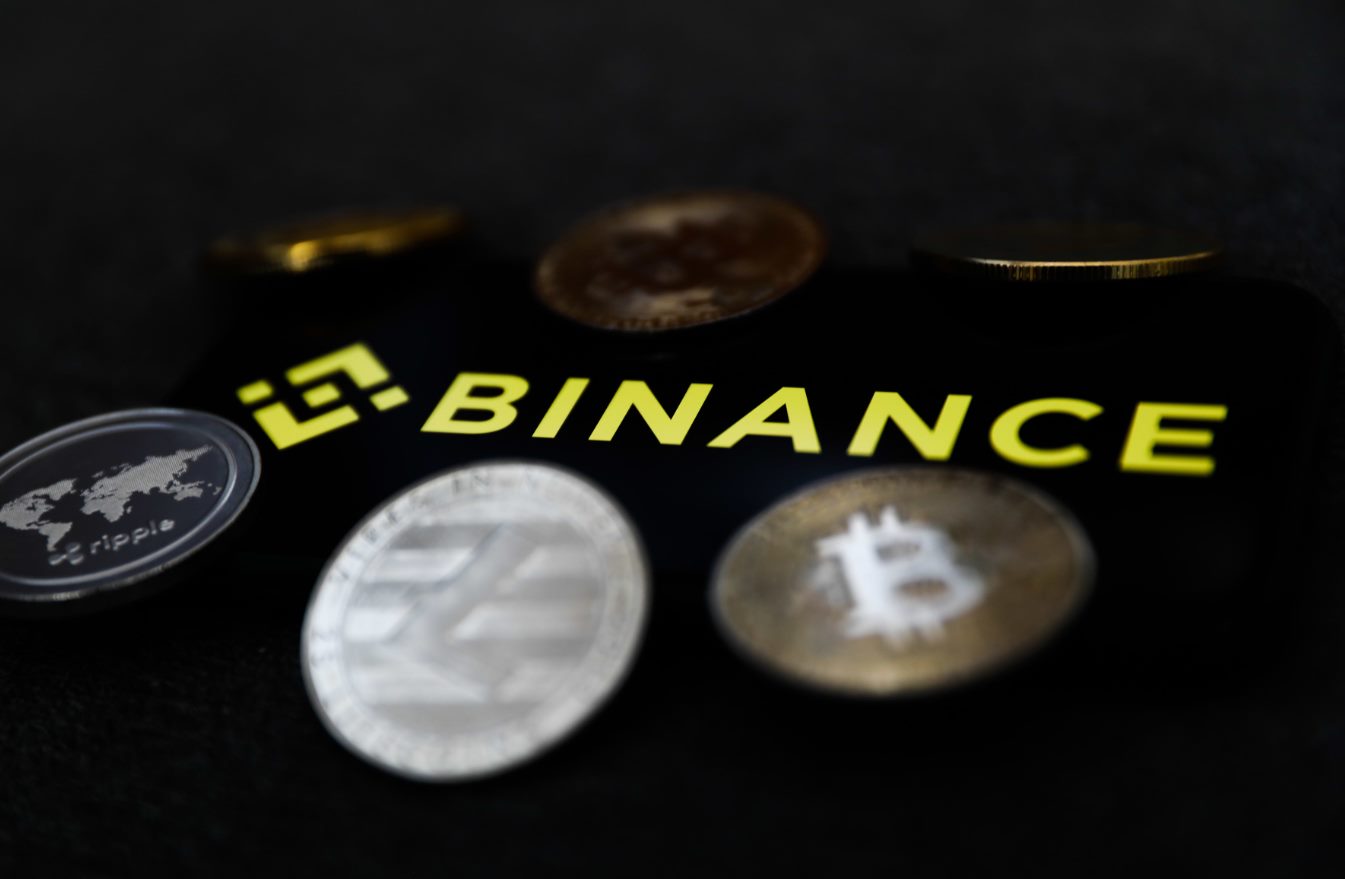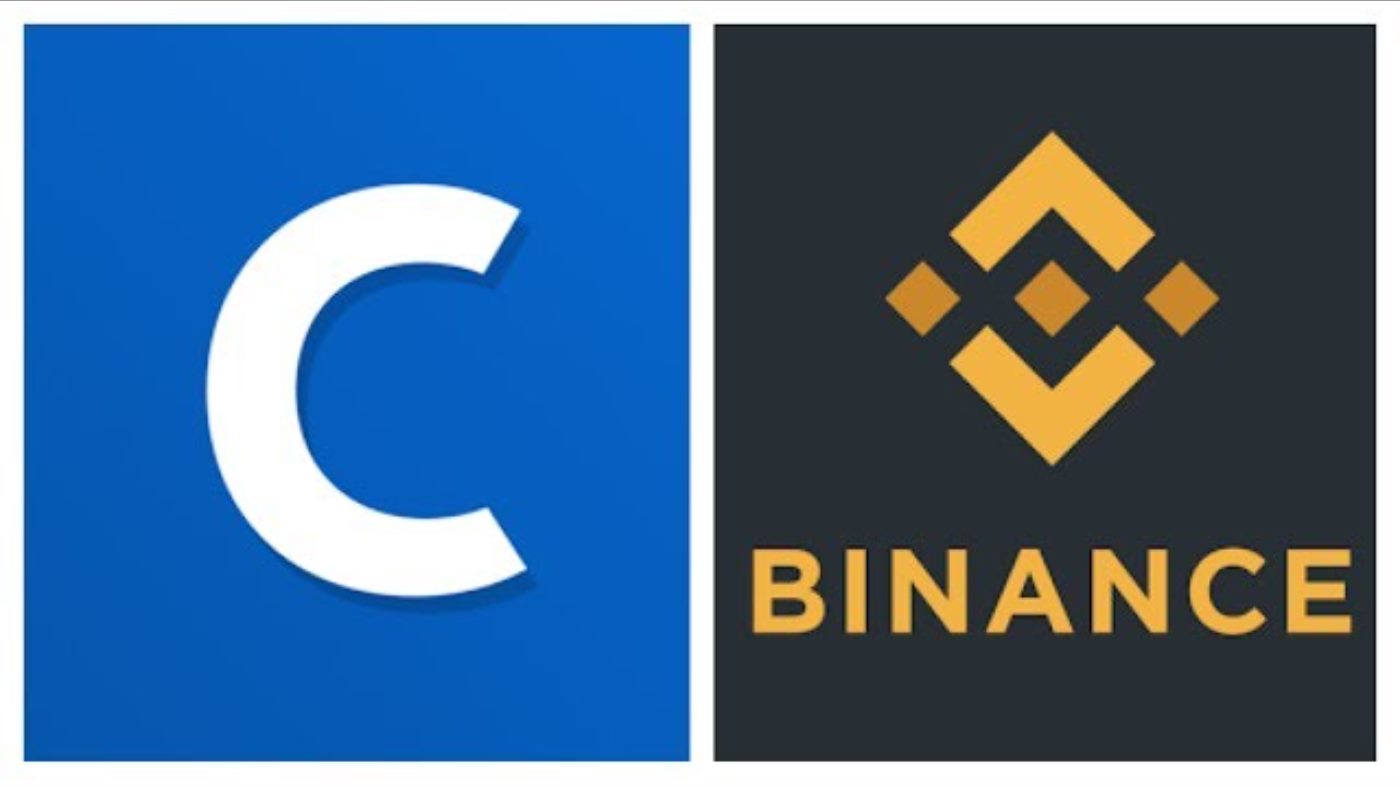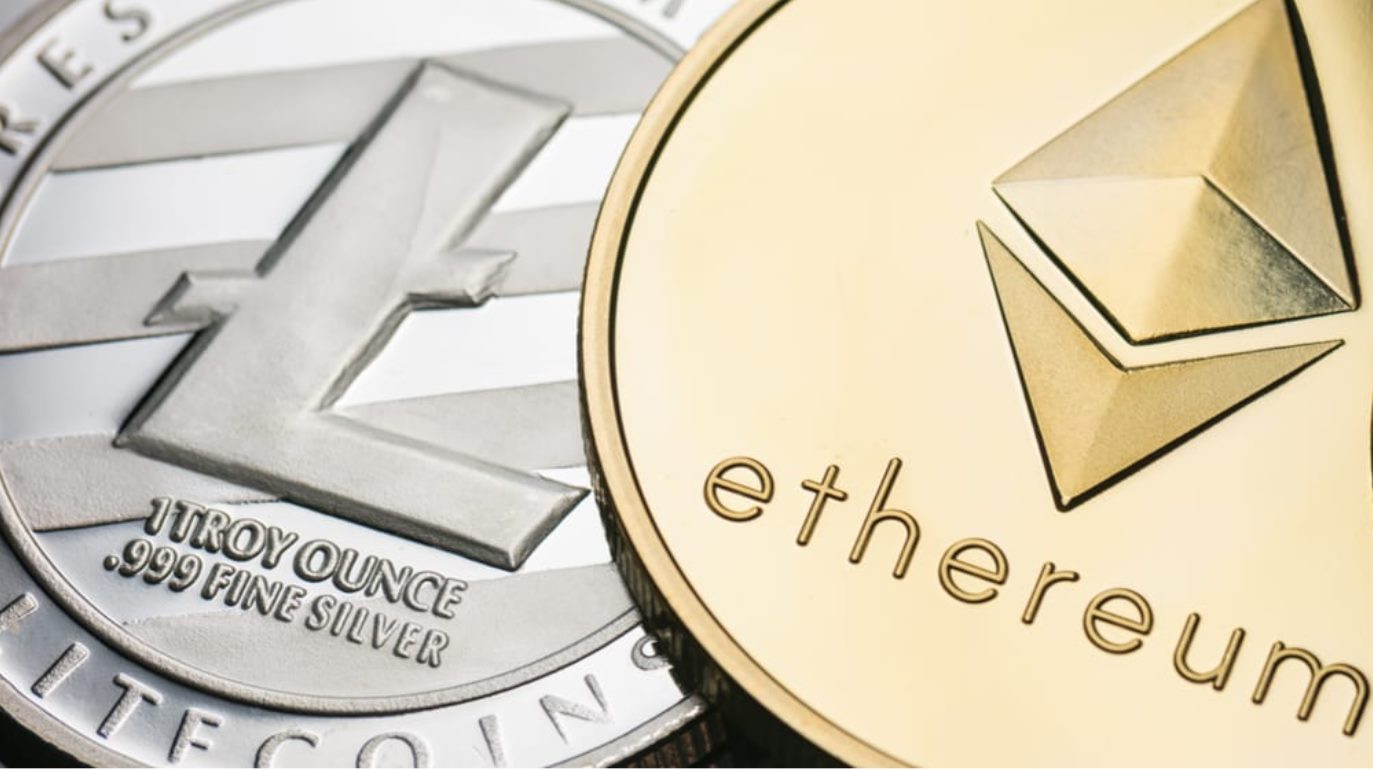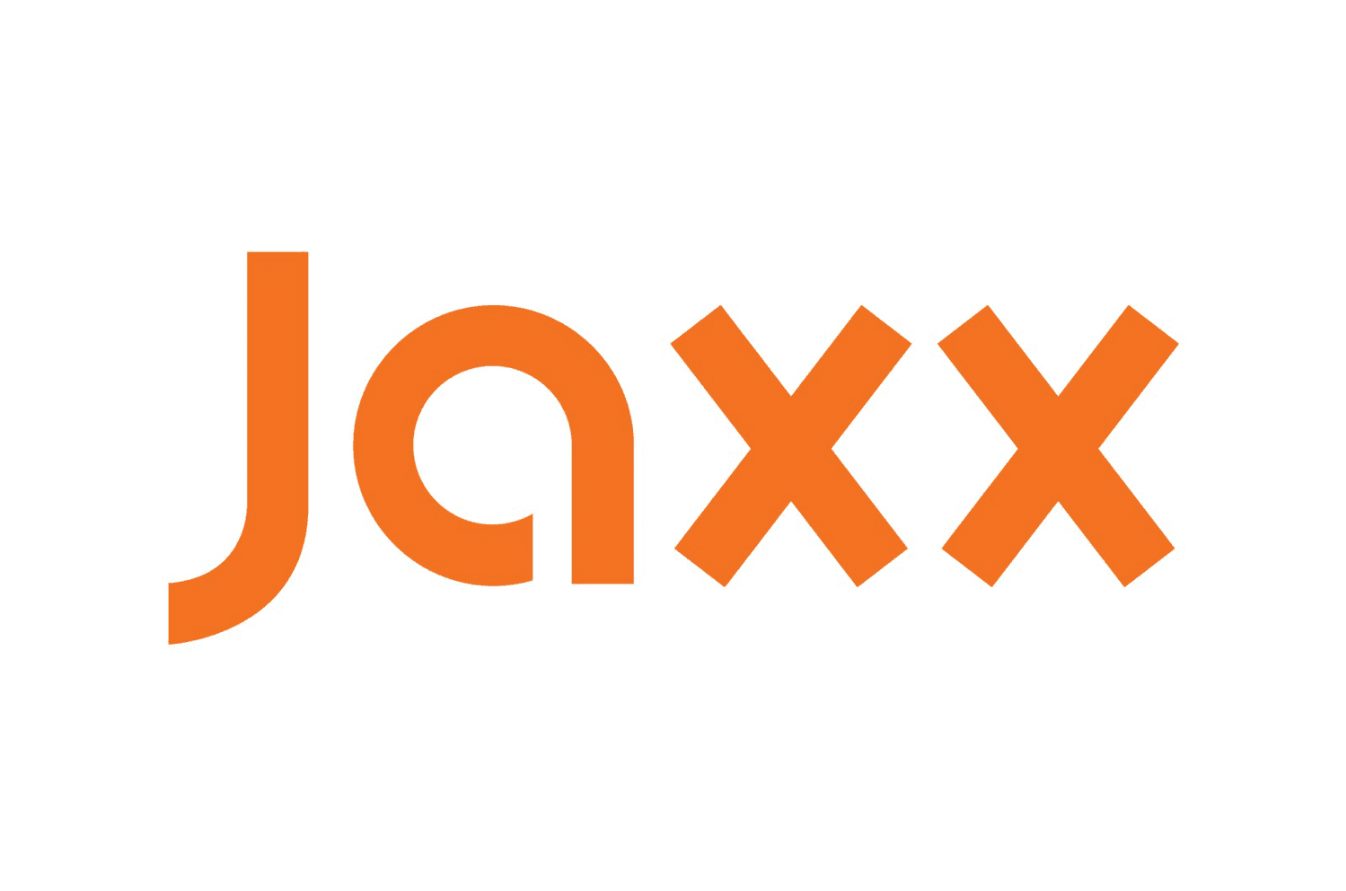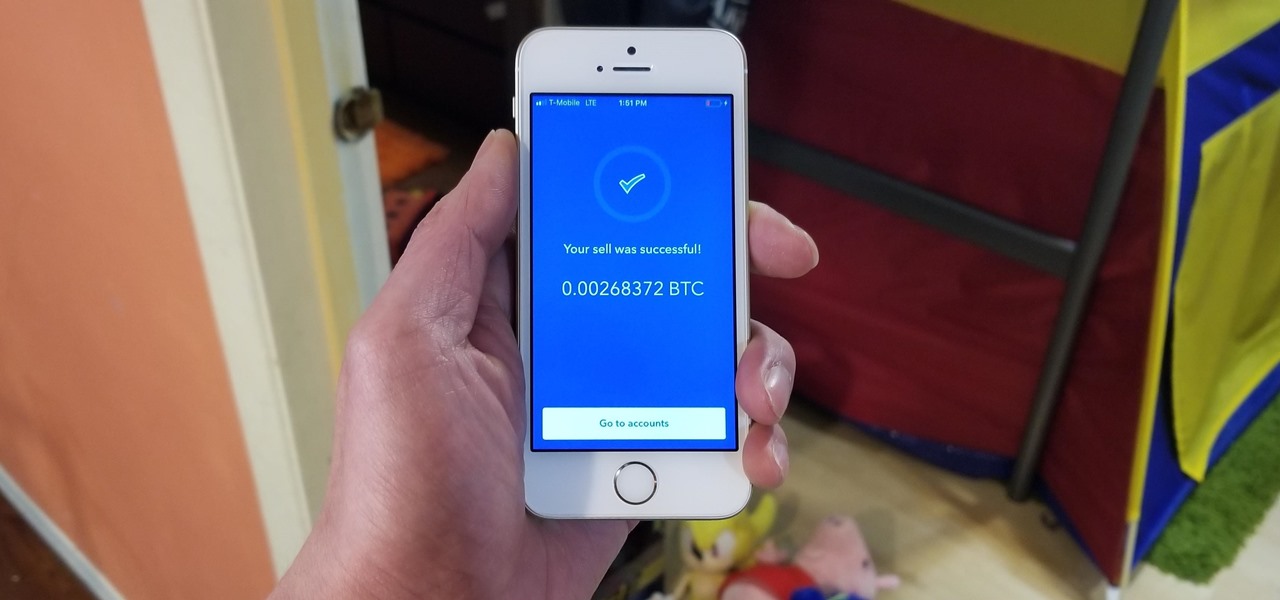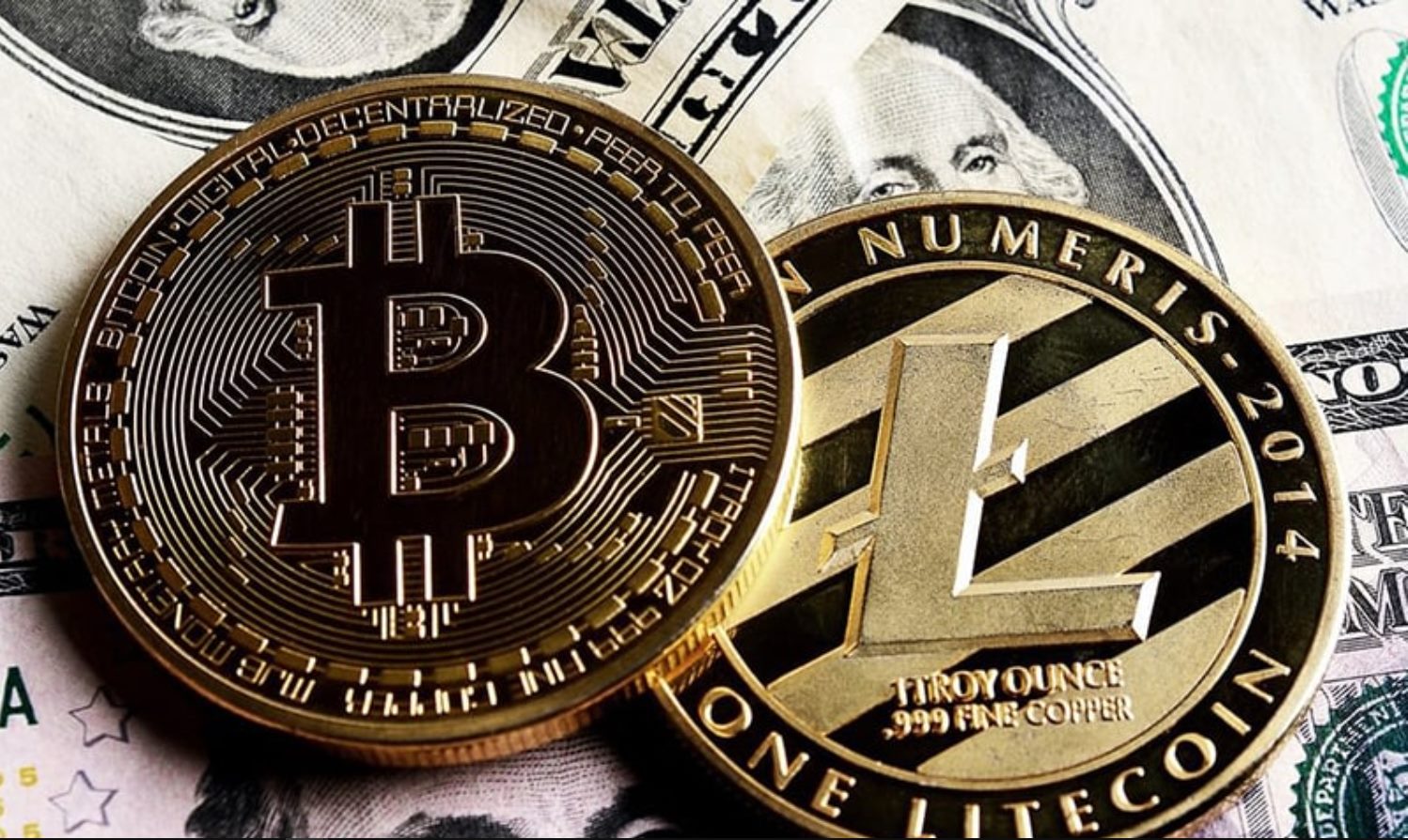Introduction
Welcome to the world of Litecoin transactions! If you’re new to the cryptocurrency space or simply curious about Litecoin, you may have wondered how to see and track Litecoin transactions. Fortunately, there are various ways to access and view these transactions on the blockchain.
Litecoin, often referred to as the silver to Bitcoin’s gold, is a popular and widely-used cryptocurrency. Like other cryptocurrencies, Litecoin operates on a decentralized network, utilizing blockchain technology to record and verify transactions.
Understanding Litecoin transactions is essential for a range of reasons. Whether you’re a crypto enthusiast, a merchant accepting Litecoin payments, or simply want to ensure the security and transparency of your own transactions, being able to view and track Litecoin transactions is crucial. In this article, we will explore the different methods available to view Litecoin transactions, from blockchain explorers to wallet software.
By accessing and viewing Litecoin transactions, you gain insights into the movement of coins on the network. This not only helps you track your own transactions but also offers a window into the broader Litecoin ecosystem. You can see where transactions are originating from, where they are going, and the amount involved. This level of transparency fosters trust among users and ensures the integrity of the Litecoin network.
In this comprehensive guide, we will walk you through the process of viewing Litecoin transactions step-by-step. Additionally, we will compare and discuss popular blockchain explorers, highlighting their features and benefits. Whether you prefer a simple interface or advanced analytics, there’s a blockchain explorer out there to meet your needs.
So, let’s dive into the world of Litecoin transactions and discover the tools and insights that will empower you to navigate this exciting cryptocurrency ecosystem more effectively.
What Are Litecoin Transactions?
In order to understand how to view Litecoin transactions, it’s important to have a clear understanding of what exactly these transactions are. At its core, a Litecoin transaction is the transfer of Litecoin from one address to another within the Litecoin network.
Similar to traditional banking transactions, Litecoin transactions involve a sender, a receiver, and an amount of Litecoin to be transferred. These transactions are recorded on the Litecoin blockchain, a public ledger that ensures transparency and immutability.
Each Litecoin transaction contains important information, including the sender’s address, the recipient’s address, the amount of Litecoin being transferred, and any transaction fees involved. These transactions are grouped together and added to a block, with each subsequent block being linked to the previous one, forming a chain of blocks known as the blockchain.
Litecoin transactions occur peer-to-peer, meaning they do not require intermediaries such as banks or financial institutions. This allows for faster and more cost-effective transactions compared to traditional banking systems. The decentralized nature of Litecoin transactions also provides a higher level of security and privacy.
When a transaction is initiated, it is broadcasted to the Litecoin network, where miners validate and confirm the transaction. Miners, who maintain the integrity of the blockchain, solve complex mathematical problems to add new blocks to the chain and receive rewards in the form of newly created Litecoin.
Once a transaction is confirmed and included in a block, it becomes a permanent record on the Litecoin blockchain. This means that anyone can view and verify the transaction by accessing the blockchain.
Overall, Litecoin transactions are the backbone of the Litecoin network, enabling users to securely and efficiently transfer value. By understanding how these transactions work, you can gain a deeper insight into the inner workings of the Litecoin ecosystem and make informed decisions regarding your own Litecoin holdings.
Overview of the Litecoin Blockchain
The Litecoin blockchain is a decentralized ledger that records all transactions made with the Litecoin cryptocurrency. It serves as a transparent and immutable record of every transaction ever executed on the network. Understanding the basics of the Litecoin blockchain is essential in order to grasp how transactions are tracked and viewed.
Similar to other blockchain technologies, the Litecoin blockchain consists of a series of blocks that are connected to each other in a chronological order. Each block contains a list of transactions, along with a unique identifier called a hash, a timestamp, and a reference to the previous block. This chain of interconnected blocks forms the blockchain, which is maintained by a network of participants known as miners.
The Litecoin blockchain uses a consensus algorithm called Scrypt, which allows for faster block generation times compared to Bitcoin. This results in quicker transaction confirmations and a more efficient network overall.
One of the key features of the Litecoin blockchain is its high security. The decentralized nature of the blockchain ensures that no single party can control or manipulate the network. Transactions recorded on the Litecoin blockchain are immutable, meaning they cannot be altered or tampered with once confirmed. This creates a high level of trust and reliability in the system.
The Litecoin blockchain also includes a feature called the Litecoin Script, which enables users to create more complex transactions. This feature allows for the implementation of smart contracts and the development of decentralized applications (DApps) on the Litecoin network.
Litecoin block explorers play a vital role in accessing and viewing transactions on the Litecoin blockchain. These online tools provide a user-friendly interface that allows users to search for specific transactions, addresses, and blocks. This convenient feature makes it easy for anyone to explore and monitor the movement of Litecoin on the network.
Overall, the Litecoin blockchain is a robust and secure network that facilitates fast and reliable transactions. By leveraging the power of blockchain technology, Litecoin provides users with a decentralized and transparent platform for financial transactions.
How to View Litecoin Transactions on the Blockchain Explorer
A blockchain explorer is a powerful tool that allows users to view and track transactions on the Litecoin blockchain. By using a blockchain explorer, you can gain valuable insights into the movement of Litecoin, verify the status of transactions, and explore the network’s transaction history. Here are the steps to view Litecoin transactions on a blockchain explorer:
Step 1: Choose a blockchain explorer – There are several reputable blockchain explorers available for viewing Litecoin transactions. Some popular options include Blockchair, BlockCypher, and Litecoin Explorer. Choose the explorer that suits your preferences in terms of user interface and functionality.
Step 2: Access the blockchain explorer – Once you have selected a blockchain explorer, navigate to the website or platform where it is hosted. The homepage of the explorer will typically display a search bar where you can input transaction details or addresses.
Step 3: Enter transaction details – In the search bar, enter the transaction ID (TXID) or public address associated with the Litecoin transaction you want to view. If you don’t have these details, you can also search by block number or hash.
Step 4: View the transaction details – After entering the necessary information, the blockchain explorer will display the transaction details. This includes the sender’s address, recipient’s address, transaction amount, transaction fee, confirmations, and timestamp.
Step 5: Explore additional features – Many blockchain explorers offer additional features beyond transaction viewing. You can explore blocks, check wallet balances, track mining activities, and even access advanced analytics and charts to visualize network statistics.
Step 6: Verify transaction status – Using the blockchain explorer, you can verify the status of a Litecoin transaction. By checking the confirmations, you can ensure that the transaction has been successfully added to the blockchain and is considered valid.
Step 7: Repeat for other transactions – If you have multiple transactions you want to view, simply repeat the process by entering the corresponding transaction details in the search bar of the blockchain explorer.
By following these steps and utilizing a blockchain explorer, you can easily view and track Litecoin transactions. Whether you want to monitor your own transactions or explore the broader Litecoin network, a blockchain explorer is an invaluable tool for gaining insights into the world of Litecoin transactions.
Popular Blockchain Explorers to Check Litecoin Transactions
When it comes to viewing and tracking Litecoin transactions, there are several popular blockchain explorers that provide user-friendly interfaces and comprehensive tools. These explorers allow you to search and monitor transactions on the Litecoin blockchain. Here are some of the most widely used blockchain explorers for checking Litecoin transactions:
1. Blockchair: Blockchair is a versatile blockchain explorer that supports multiple cryptocurrencies, including Litecoin. It offers a clean and intuitive interface, allowing users to search for transactions, blocks, and addresses. Blockchair provides a wealth of information, including transaction details, transaction history, and real-time network statistics.
2. BlockCypher: BlockCypher is a powerful blockchain explorer known for its robust features and developer-friendly tools. With BlockCypher, users can easily track and view Litecoin transactions, as well as access detailed blockchain analytics. It also provides APIs and SDKs for developers to integrate blockchain functionalities into their applications.
3. Litecoin Explorer: As the name suggests, Litecoin Explorer is a dedicated blockchain explorer specifically designed for Litecoin. It offers a straightforward interface that allows users to search for transactions, addresses, and blocks. With Litecoin Explorer, you can view transaction details, check confirmations, and analyze network activity.
4. Litecoin Insight: Litecoin Insight is another popular blockchain explorer for tracking Litecoin transactions. It provides a user-friendly interface with clear visualizations of transaction data and network statistics. Litecoin Insight also offers features like block explorer, address history, and transaction broadcasting.
5. CoinExplorer: CoinExplorer is a multi-currency blockchain explorer that includes support for Litecoin. It provides a comprehensive view of Litecoin transactions, allowing users to search for addresses, blocks, and transactions. CoinExplorer also offers additional features such as wallet integration and market data for a complete overview of the Litecoin ecosystem.
6. SoChain: SoChain is a simple yet effective blockchain explorer for Litecoin and various other cryptocurrencies. It offers a clean interface with easy navigation, making it convenient to search and view Litecoin transactions. SoChain also provides an API for developers to integrate blockchain data into their applications.
These popular blockchain explorers offer diverse features and functionalities, catering to different user preferences. Whether you’re a casual user or a developer, utilizing these blockchain explorers will help you stay informed about Litecoin transactions, verify their status, and gain insights into the broader network activity. Choose the one that aligns with your needs and explore the world of Litecoin transactions with confidence.
Step-by-Step Guide on Viewing Litecoin Transactions on Blockchain Explorer
Using a blockchain explorer to view Litecoin transactions is a straightforward process. By following this step-by-step guide, you’ll be able to navigate the blockchain explorer and access the transaction details you’re interested in:
Step 1: Choose a blockchain explorer – Select a reliable and user-friendly blockchain explorer that supports Litecoin. Popular options include Blockchair, BlockCypher, and Litecoin Explorer.
Step 2: Access the blockchain explorer – Go to the website or platform hosting the chosen blockchain explorer. You will typically find a search bar or input field on the homepage.
Step 3: Enter the transaction details – In the search bar, enter the transaction ID (TXID) or public address associated with the Litecoin transaction you want to view. If you don’t have these details, you can also search by block number or hash.
Step 4: Initiate the search – Click on the search button or press enter to initiate the search. The blockchain explorer will process your request and retrieve the relevant information.
Step 5: View the transaction details – The blockchain explorer will display the transaction details on the results page. You will see information such as the sender’s address, recipient’s address, transaction amount, transaction fee, confirmations, and timestamp.
Step 6: Explore additional features – Take advantage of any additional features offered by the blockchain explorer. These may include viewing related transactions, exploring the transaction history of the involved addresses, or analyzing transaction patterns.
Step 7: Verify transaction status – Check the number of confirmations on the transaction details page. A higher number of confirmations indicates a more secure and finalized transaction.
Step 8: Repeat as needed – If you have multiple transactions to view, repeat the steps by entering the relevant transaction details in the search bar.
By following these step-by-step instructions, you can easily view Litecoin transactions on a blockchain explorer. This process empowers you to track your own transactions, verify their status, and gain insights into the movement of Litecoin on the network. Enjoy exploring the fascinating world of Litecoin transactions using the power of blockchain explorers.
Tracking Litecoin Transactions Using Wallet Software
In addition to blockchain explorers, another way to track Litecoin transactions is through wallet software. Wallet software not only allows you to securely store and manage your Litecoin, but it also provides features for tracking your transactions. Here is a guide on how to track Litecoin transactions using wallet software:
Step 1: Choose a Litecoin wallet – Select a wallet that supports Litecoin and offers transaction tracking features. Popular options include Litecoin Core, Exodus, Electrum-LTC, and LoafWallet.
Step 2: Download and install the wallet – Visit the official website of the chosen wallet and download the software for your operating system. Follow the installation instructions provided to set up the wallet on your device.
Step 3: Create or import a wallet – If you don’t already have a Litecoin wallet, create a new wallet using the wallet software. Alternatively, if you already have a wallet, import it into the wallet software using the associated private key or seed phrase.
Step 4: Sync the wallet – Once your wallet is set up, it will start syncing with the Litecoin network to fetch the latest transaction data. This process may take some time depending on the wallet and network conditions.
Step 5: Access transaction history – Open the wallet software and navigate to the transaction history or transaction tab. Depending on the wallet’s interface, you may find this information in different sections, such as the dashboard, history, or activity.
Step 6: View transaction details – In the transaction history, you will find a list of your past Litecoin transactions. Each transaction entry will display details such as the transaction amount, sender’s address, recipient’s address, transaction fee, and confirmations. Some wallets may also provide additional information like transaction status and notes.
Step 7: Explore advanced features – Wallet software often offers advanced features for tracking and analyzing transactions. These may include the ability to label transactions, attach notes or memos, export transaction history, and generate transaction reports or summaries.
Step 8: Monitor incoming and outgoing transactions – Continuously check your wallet’s transaction history to track incoming and outgoing transactions. This allows you to keep an eye on the movement of your Litecoin and ensure that all transactions are accounted for.
By utilizing wallet software to track Litecoin transactions, you can easily monitor the flow of your funds and review the details of each transaction at your convenience. This provides a convenient and secure way to stay informed about your Litecoin transaction history and maintain control over your digital assets.
Litecoin Block Explorers Compared: Features and Benefits
When it comes to viewing and exploring Litecoin transactions on the blockchain, there are several block explorers available, each with its own unique features and benefits. Let’s compare some popular Litecoin block explorers and their standout features:
1. Blockchair: Blockchair offers a user-friendly interface and supports multiple cryptocurrencies, including Litecoin. It allows users to search for transactions, blocks, and addresses. It provides advanced filters and sorting options, making it easy to navigate and explore the blockchain. Blockchair also offers real-time network statistics, advanced analytics, and API integration.
2. BlockCypher: BlockCypher is a powerful blockchain explorer with extensive developer tools and APIs. It offers a detailed view of Litecoin transactions along with real-time data and insights. BlockCypher provides transaction histories, address balances, and supports HD wallets. It also offers webhooks and notifications for developers to receive real-time updates.
3. Litecoin Explorer: As a dedicated Litecoin blockchain explorer, Litecoin Explorer provides a straightforward interface to view and track Litecoin transactions. Its simple design makes it easy to search for specific transactions or addresses. Additionally, it offers block details, mining information, and transaction history charts.
4. Litecoin Insight: Litecoin Insight is a user-friendly blockchain explorer that provides an intuitive interface for tracking Litecoin transactions. It offers features like transaction history, address details, block explorer, and the ability to broadcast transactions. Litecoin Insight also provides valuable network statistics and is known for its ease of use.
5. CoinExplorer: CoinExplorer is a multi-currency blockchain explorer that supports Litecoin. It boasts a user-friendly interface with a wealth of information about the Litecoin blockchain. CoinExplorer offers features such as rich transaction details, address history, transaction history charts, and market data. It also includes wallet integration and supports staking and masternode monitoring.
6. SoChain: SoChain provides a simple and intuitive interface for viewing Litecoin transactions. It offers basic transaction details, address information, and a block explorer. SoChain is known for its ease of use and provides an API for developers to access blockchain data.
When choosing a Litecoin block explorer, consider factors such as user interface, functionality, real-time data, developer support, and additional features. Depending on your needs, you may prefer a more advanced explorer with comprehensive analytics or a simple one for quick transaction searches.
Each of these block explorers offers valuable tools for navigating the Litecoin blockchain and provides users with the ability to monitor and verify transactions. Explore various block explorers to find the one that best suits your requirements and enhances your Litecoin experience.
Understanding Litecoin Transaction Details
When viewing Litecoin transactions, it’s important to have a clear understanding of the various details associated with each transaction. These details provide insights into the movement of Litecoin and help users verify the accuracy and validity of transactions. Here are the key elements to understand when exploring Litecoin transaction details:
1. Transaction ID (TXID): The transaction ID, also known as the transaction hash, is a unique identifier assigned to each Litecoin transaction. It acts as a digital fingerprint for the transaction and allows for easy identification and tracking.
2. Sender’s Address: The sender’s address, also referred to as the “from” address or input address, is the Litecoin address from which the funds are being sent. It represents the origin of the transaction and shows where the funds are being deducted from.
3. Recipient’s Address: The recipient’s address, also known as the “to” address or output address, is the Litecoin address to which the funds are being sent. It represents the destination of the transaction and indicates where the funds are being added.
4. Transaction Amount: The transaction amount signifies the quantity of Litecoin being sent in the transaction. It is typically denoted in the smallest unit of Litecoin, known as “Litoshi” (0.00000001 LTC). The transaction amount shows the value being transferred from the sender to the recipient.
5. Transaction Fee: The transaction fee is a small amount of Litecoin paid by the sender to incentivize miners to include the transaction in the blockchain. Miners receive the transaction fee as a reward for including the transaction in a block. The fee amount can vary based on network congestion and the size of the transaction.
6. Confirmations: Confirmations indicate the number of blocks that have been added to the Litecoin blockchain since the transaction was included. As more blocks are added, the transaction becomes more secure and less susceptible to being reversed or double-spent. A higher number of confirmations provides a higher level of confidence in the transaction’s finality.
7. Timestamp: The timestamp represents the date and time at which the transaction was added to the Litecoin blockchain. It provides information on when the transaction occurred, allowing for chronological tracking and verification.
By understanding these key components, users can gain valuable insights into Litecoin transactions. These details not only help users track their own transactions but also provide transparency and security within the Litecoin network. Exploring and verifying transaction details ensures accurate record-keeping and facilitates a better understanding of the movement of Litecoin across the blockchain.
Importance of Viewing Litecoin Transactions for Security and Transparency
Viewing Litecoin transactions plays a crucial role in ensuring the security and transparency of the cryptocurrency ecosystem. By keeping a close eye on transaction activity, users can enhance the overall integrity of the network and protect their own financial interests. Here’s why viewing Litecoin transactions is essential:
1. Verifying Transactions: By viewing Litecoin transactions, users can verify the accuracy and legitimacy of each transaction. This helps to prevent fraud, double-spending, or any unauthorized activities. Whether you’re a sender or recipient, confirming the details of the transaction ensures that the correct amount of Litecoin has been transferred to the intended recipient.
2. Tracking Funds: Viewing Litecoin transactions allows users to track the movement of their funds. Whether you’re monitoring incoming payments, checking on the status of outgoing transactions, or simply reviewing transaction history, tracking funds ensures that your assets are accounted for and that there are no discrepancies or unexpected activities.
3. Ensuring Security: Transaction viewing is essential for maintaining the security of your Litecoin holdings. By monitoring transactions, you can identify any suspicious or unauthorized transactions that may indicate potential security breaches. If you come across any irregularities, you can promptly take appropriate measures to safeguard your funds and investigate further if necessary.
4. Promoting Transparency: The open nature of blockchain technology allows for transparency within the Litecoin network. Viewing transactions promotes trust and transparency by providing participants with a clear record of all transactional activity. This transparency fosters confidence among users and prevents fraudulent behavior within the network.
5. Enhancing Compliance: In certain cases, viewing Litecoin transactions is necessary to comply with regulatory requirements. For instance, businesses accepting Litecoin payments may need to track and document transactions for tax purposes or to adhere to anti-money laundering (AML) and know your customer (KYC) regulations. Regularly viewing and documenting transactions helps maintain compliance with these regulatory obligations.
6. Investigating Disputes: In the event of a dispute or discrepancy related to a Litecoin transaction, viewing the transaction details becomes crucial. Having access to transaction records allows for a thorough investigation into the circumstances and provides evidence to support resolution efforts. This level of transparency helps resolve disputes in a fair and accurate manner.
Viewing Litecoin transactions enhances security, promotes transparency, and ensures the integrity of the network. By actively monitoring transaction activity, users can protect their funds and contribute to the overall trust and efficiency of the Litecoin ecosystem. It is an essential practice for individuals, businesses, and all participants within the cryptocurrency space.
Conclusion
Viewing and tracking Litecoin transactions is a fundamental practice that allows users to gain insights into the movement of their funds and ensure the security and transparency of the cryptocurrency ecosystem. By utilizing blockchain explorers and wallet software, users can navigate the Litecoin blockchain, access transaction details, and monitor the flow of their Litecoin holdings.
Blockchain explorers, such as Blockchair, BlockCypher, Litecoin Explorer, Litecoin Insight, CoinExplorer, and SoChain, offer various features and benefits that cater to different user preferences. These explorers provide user-friendly interfaces, advanced analytics, and real-time data, empowering users to explore and verify transaction information effortlessly.
Wallet software, such as Litecoin Core, Exodus, Electrum-LTC, and LoafWallet, not only enables users to securely store and manage their Litecoin but also allows them to track their transaction history. With wallet software, users can view transaction details, monitor incoming and outgoing transactions, and ensure the accuracy and security of their Litecoin holdings.
Understanding the important details associated with Litecoin transactions, such as transaction IDs, sender’s and recipient’s addresses, transaction amounts, transaction fees, confirmations, and timestamps, provides users with valuable insights into the movement of their funds. It also facilitates the verification of transactions, tracking of funds, and ensures the overall integrity of the Litecoin network.
Viewing Litecoin transactions holds significant importance in terms of security, transparency, compliance, and dispute resolution. By actively monitoring transaction activity, users can identify and address potential security breaches, prevent fraudulent behavior, comply with regulatory requirements, and resolve transaction-related disputes effectively.
In conclusion, viewing and tracking Litecoin transactions through blockchain explorers and wallet software is a critical practice for individuals, businesses, and participants within the cryptocurrency ecosystem. By taking advantage of these tools and understanding transaction details, users can enhance their understanding, security, and trust in the Litecoin network. Embracing the transparent and decentralized nature of Litecoin transactions empowers users to confidently navigate the cryptocurrency landscape.









